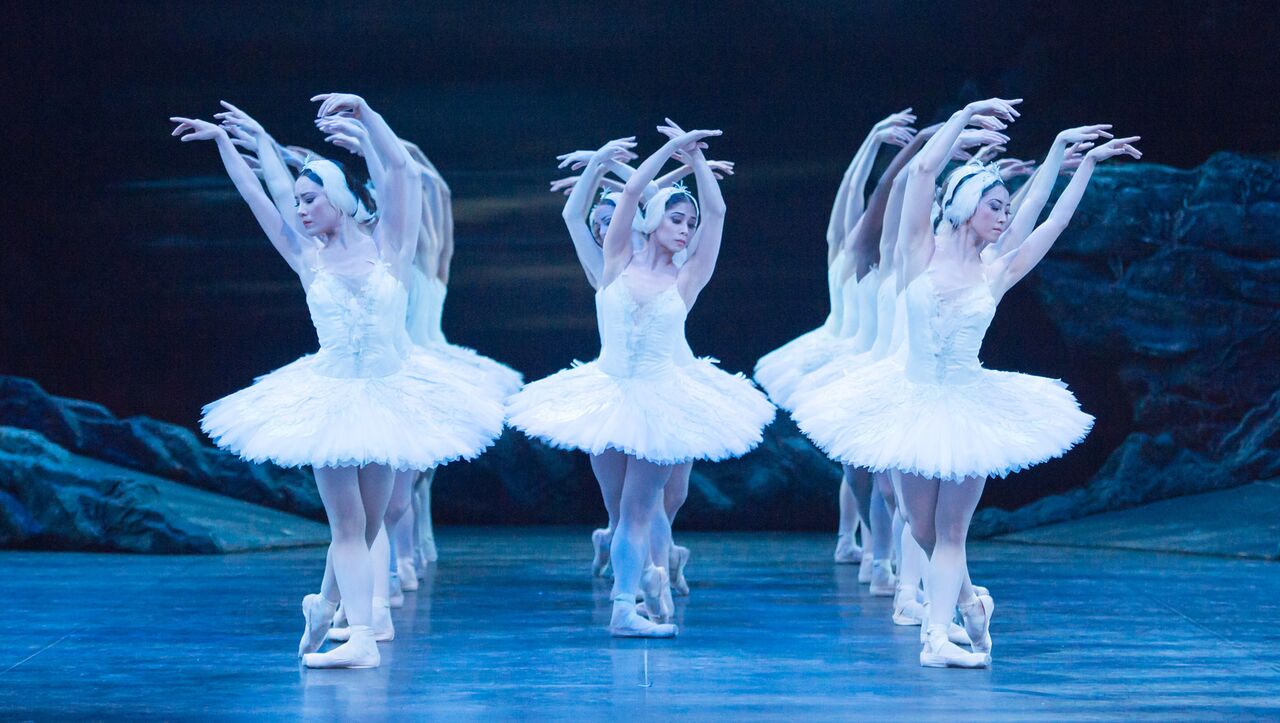 Of all the great classical ballets, Tchaikovsky’s Swan Lake has an unrivalled iconic status. The picture of a row of perfectly symmetrical ballerinas, all in white tutus and with arms a-fluttering, is the most familiar image we have of ballet. Since its creation over one hundred and forty years ago Swan Lake has frequently been parodied, modernised and sometimes transformed almost out of recognition. It was spoofed in Barbra Streisand’s Funny Girl, and more recently it featured strongly in the movie melodrama Black Swan, starring Natalie Portman as a psychotic prima ballerina. Matthew Bourne’s novel version, with an all-male corps de ballet, has been wowing audiences around the globe for the past twenty-three years, attaining an iconic status of its own.
Of all the great classical ballets, Tchaikovsky’s Swan Lake has an unrivalled iconic status. The picture of a row of perfectly symmetrical ballerinas, all in white tutus and with arms a-fluttering, is the most familiar image we have of ballet. Since its creation over one hundred and forty years ago Swan Lake has frequently been parodied, modernised and sometimes transformed almost out of recognition. It was spoofed in Barbra Streisand’s Funny Girl, and more recently it featured strongly in the movie melodrama Black Swan, starring Natalie Portman as a psychotic prima ballerina. Matthew Bourne’s novel version, with an all-male corps de ballet, has been wowing audiences around the globe for the past twenty-three years, attaining an iconic status of its own.
Does the original Swan Lake still have something to offer? Indeed, it does. The English National Ballet have brought a very traditional Swan Lake to the Bristol Hippodrome, and it is a delight from start to finish. It might be thought that a fairy-tale about a princess turned into a swan by an evil sorcerer’s curse is rather passé, even rather twee. In portraying pure white swans as representations of ideal womanhood it might appear hopelessly outdated, too. Perhaps so, but you do not turn to a nineteenth century classical ballet looking for social commentary, cutting-edge innovation, or even much by way of plot. Instead, Swan Lake offers unashamed, old-fashioned romantic escapism, albeit of a very refined kind. Under the direction of Gavin Sutherland, Tchaikovsky’s magnificent score is played superbly by the English National Ballet Philharmonic, and Derek Deane’s choreography, not a million miles away from Petipa and Ivanov’s 1895 version, is an aesthetic triumph. Some additional choreography by the great Frederick Ashton has been retained, too.
Last night’s Odette/Odile was Erina Takahashi. This petite Japanese dancer was wonderfully effective when conveying Odette’s vulnerability and entrapment. In Act III she was equally impressive as the usurper Odile, carrying off the notorious thirty-two fouettes – whipped pirouettes – with dazzling aplomb. She was partnered by Francesco Gabriele Frola, who gave the role of Seigfried considerable depth, particularly in Act I where he very movingly depicted Siegfried’s yearning for a perfect love. Every shape, gesture and movement had astonishing clarity.
It is a standard feature of this kind of ballet that the action is frequently interrupted by quite lengthy displays of dance that often add a touch of regional colour or perhaps a little charming comedy, but which bring the narrative to a complete halt. Unless these sequences have something special to offer, they can seem to be little more than padding. Thankfully, in this production these interludes are entertainingly characterful. I particularly enjoyed Anjuli Hudson and Barry Drummond’s quirky ‘Neapolitan Dance’, complete with skilfully wielded tambourines.
Designer Peter Farmer’s sets are very impressive, including the sumptuous, candelabra-lit palace of Act III. But the most beautiful scene comes at the very start of Act IV, when the swans rise up through the mist that envelops the lakeside; it is quite magical. This is a very fine Swan Lake indeed. It is at the Hippodrome until December 1st.
★★★★★ Mike Whitton 27th November 2018

